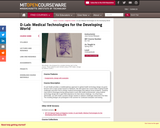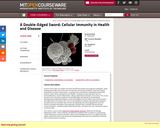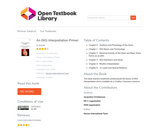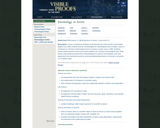Table of Contents:
Chapter 1: What are Drugs?
Chapter Objectives
1.1 Types of Drugs
1.2 Brief Introductions into the Most Commonly Misused and Abused Drugs
1.3 Drug Schedules Set by Current Law and Regulations
1.4 The Comprehensive Drug Abuse Prevention and Control Act of 1970
Chapter 2: How the Body Works
Chapter Objectives
2.1 Drug Delivery Methods
2.2 Understanding Parts of the Brain - Videos and Pictures
2.3 Drugs and the Brain
2.4 Impacts of Drugs on Neurotransmission - Overview Table from NIDA
2.5 The Placebo Effect
2.6 Key Terms Study Guide
Chapter 3: Types of Drugs
Chapter 3 Objectives
3.1 Introduction to Drug Classes
3.2 Narcotics
3.3 Narcotics Continued
3.4 Stimulants
3.5 Nicotine
3.6 Depressants
3.7 Alcohol
3.8 Hallucinogens
3.9 Marijuana/Cannabis
3.10 Steroids
3.11 Inhalants
3.12 Drugs of Concern
3.13 Designer Drugs
Altering Consciousness With Psychoactive Drugs
Chapter 4: Prescriptions, Over The Counter (OTC), Supplements (medications and supplements)
Chapter Objectives
4.1 Prescriptions drugs: Medications for Psychological Disorders
4.2 Prescription drugs: the Drug Approval Process
4.3 Over-the-Counter Drugs
4.4 Supplements and Foods for Health and Well-Being
4.5 Drug Interactions: With other Drugs and Food
Chapter 5: Law, Regulation, and Social Policy
Chapter Objectives
5.1 Drug Policy and the War on Illegal Drugs
5.2 Opioid Crisis
5.3 Milestones of Drug Regulation in the United States
5.4 Federal Drug Penalties
5.5 Drug Policies: Penn State and Pennsylvania
5.6 Confidentiality of Alcohol and Drug Abuse Patient Records
5.7 Drug Screening and Decriminalization
Chapter 6: Use, Abuse, Addiction & Treatment
Chapter 6 Objectives
6.1 Drugs, Brains, and Behavior: The Science of Addiction
6.2 Why Do Adults Misuse Prescription Drugs?
6.3 Treatment and Recovery
6.4 Addiction Treatments and Therapies
Chapter 7: Prevention and Treatment of Addiction
Chapter 7 Objectives
7.1 Drug Use In History
7.2 Addressing the Drug Problem and Reducing Drug Use
7.3 Prevention of Substance Abuse and Mental Illness by SAMHSA
7.4 The Importance of Prevention
7.5 Current Prevention Programs, New Initiatives, and Food for Thought

















